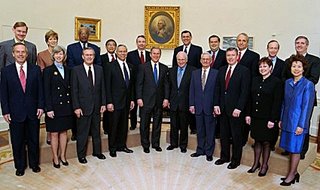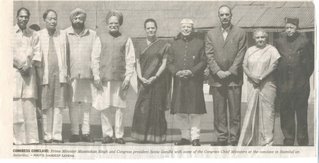Guest Blogger Series Part II: Women in India
After 6 months of careful observation, this is how I would describe gender roles amongst young people in India: Men are loud and obnoxious, women are shy, polite, and mostly voiceless. In adulthood things don’t change all that much. Men make the decisions, and women quietly and submissively cook, clean, and raise the children. I realize this is a generalization, with all its inherent shortcomings, but it is often the frightening truth.
Below is a list of observations and experiences I have had that I think are emblematic of the experience of women as I see it in India:
1. English Class - As an English teacher, when I actually have classes, I try to engage the students in discussions about relevant social issues such as gender equality, but few female students are willing to voice their opinions on any issue while male students are present. So I was surprised and delighted when one particular student was quick to criticize the treatment of women in Kerala. Outside of class I complimented her on her assertiveness and inquired as to her future goals. She admitted to me, “I talk a lot about women’s issues, but all I really want is to be a good Keralite wife.”
2. CMS Cafeteria – Men and women are segregated here at just about every possible opportunity from the bus, to the classroom, and even in Church. The segregation is sometimes well-intentioned, even if paternalistic and implying inferiority, as in separate rail cars and ticket lines for woman, but all too often it is downright unequal. So I wasn’t surprised when I saw the sign for the boys’ dining hall on my first day at CMS, but I was more than a little annoyed to find that the female students dining hall was in a building completely detached from the cafeteria. To add insult to…well insult, the ladies have to order and receive their food via the side door of the kitchen.
3. Women’s Studies Centre – I must admit that CMS College houses a “Women’s Studies Centre.” It is symbolic of the look-good-on-paper culture of CMS in that the office for the Centre is next to my room and, like the “Tropical Office for Ecological Studies,” has been locked and unused the entire year.
4. Curfew: The female volunteers have experienced firsthand the difficulties and restrictions of being a woman in Kerala. For all my complaints about my term of "service" thus far, at least I have the freedom to come and go as I please whereas the female volunteers are required to be “safely” indoors by dark (a social norm and an expectation for all women in Kerala) unless escorted by a man such as their husband or father (but under no circumstances by a male friend). It amazes me that half of the population of Kerala doesn’t know what their town looks like after dark. I could not endure such struggles for 6 days let alone 6 months.
5. Annual CMS College Sports Day – an event in which students participated in a whole host of athletic events. Below is a list of events:
Men
1. 100 m race
2. 400 m race
3. 1500 m race
4. long jump
5. discus
6. javelin
7. shot put
8. slow motorcycle race
9. rope climbing
10. tug of war
Women
1. 50 m race
2. 100m walking race
3. Water Bottle Filling
4. Sack Race
5. Standing Broad Jump
6. lemon spoon race
7. Ballon Breaking
8. Towel Race
9. Ball Throw
And they had to do all of it in a churidar.
Of course, I am not a woman. I might be able to learn a little bit about what it means to be a woman in India by the conversations I have had, and even the books I have read, but that it is not authentic experience. In order to give you a better idea about what it means to be a woman in Kerala, Part II of the Guest Blogger Series features Cammy Crane (aka: Cammy 1).
http://cammy1.blogspot.com/2007/01/lights-camera-action.html
 Leaders of the Congress Party in India
Leaders of the Congress Party in India